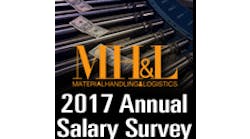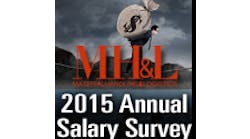Google is not a happy camper. Its trademarked name has become a transitive verb meaning, “to search for something on the Web.” I can understand Google's frustration. Brand names dissolve into oblivion once they're listed in Merriam-Webster. Think about it next time you get a paper cut and reach for a kleenex, band-aid or aspirin.
But the search-engine giant can't stop people from googling. New words naturally enter our vocabulary over time as things change. Linguists call them “neologisms.”
Words that were never brand names can come to mean something else, too. “Logistics” used to refer to movements of ammunition and supplies by the military. It didn't make its way into business until the 1950s, when companies began looking for more efficient and cost-effective ways to distribute material and product in a more complex, global marketplace.
Distribution of information has also become more complex over time. Today, we're bombarded with “blogs,” “tweets,” “spam” and countless other — you guessed it — neologisms.
Getting information is incredibly easy these days — too easy. If you google “meaning of life,” you get about 36 million results in a fraction of a second. And topping that list are the profound insights of Wikipedia.
Creating information is just as easy. There's no requirement for accuracy or usefulness on the free-for-all Internet. This is a problem for business because facts are crucial for decision making. How do we know if and when a source is credible?
That's where the old, pre-Internet rules come into play. Publications with a long track record of editorial integrity and excellence rate much higher than “new media” sources in opinion polls about believability. While the method of delivery has changed, the fundamentals of developing useful information haven't. Credible information meets the specific needs of the audience it intends to reach.
At MHM, we work hard to be a reliable source of industry knowledge. We investigate issues thoroughly before we transmit them to you on paper or through electrons. Our editorial mission is to focus on the issues most likely to impact material handling managers and to offer solutions to their most pressing challenges. And, MHM has served as the industry's benchmark of material handling reporting since World War II.
Over the past year, we were the first magazine in the industry to dig into the wood-versus-plastic pallet debate because we wanted to help you sort through the hype. Five months before OSHA officially announced its intent to develop a standard addressing combustible dust, we told you OSHA was going to get tougher on this issue so you could prepare.
We told you about the food safety bill currently pending in Congress and the Employee Free Choice Act five months before it was introduced. Six months passed before other publications started covering the card-check bill. Perhaps they were following our lead.
My point is, every magazine has its own agenda, and for MHM, our agenda is serving our audience with the most timely and relevant information available. Everyone needs at least one trusted source working in his or her best interests. Our goal is to be that source for you — material handling management professionals. Every keystroke, letter, word and sentence represents our unwavering commitment to your company's profitability and your professional success in a rapidly changing world.
We want to know exactly what you need. Is there an issue you want to learn about that nobody is addressing? Is there misinformation swirling about a certain topic, and you wish someone would get to the bottom of it? Please tell us. That's why we're here.
As you deal with the difficult challenges 2010 promises to bring, put MHM to work for you. Here's to a great start — for both of us.
For more commentary and industry insights, check out the all-new “Material Flows” blog. Drop by and share your insights with the material handling community. It's available only at MHMonline.com.

